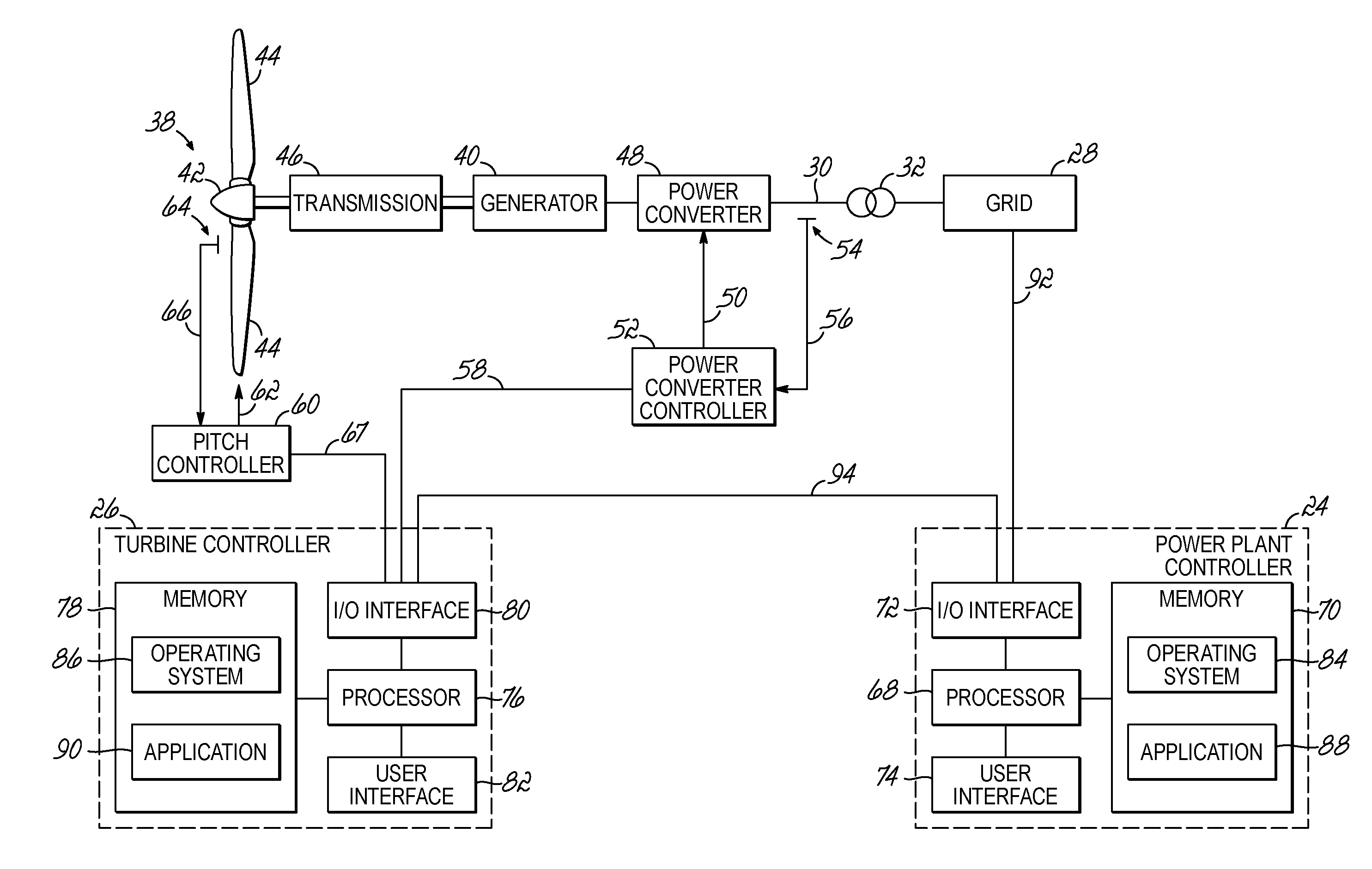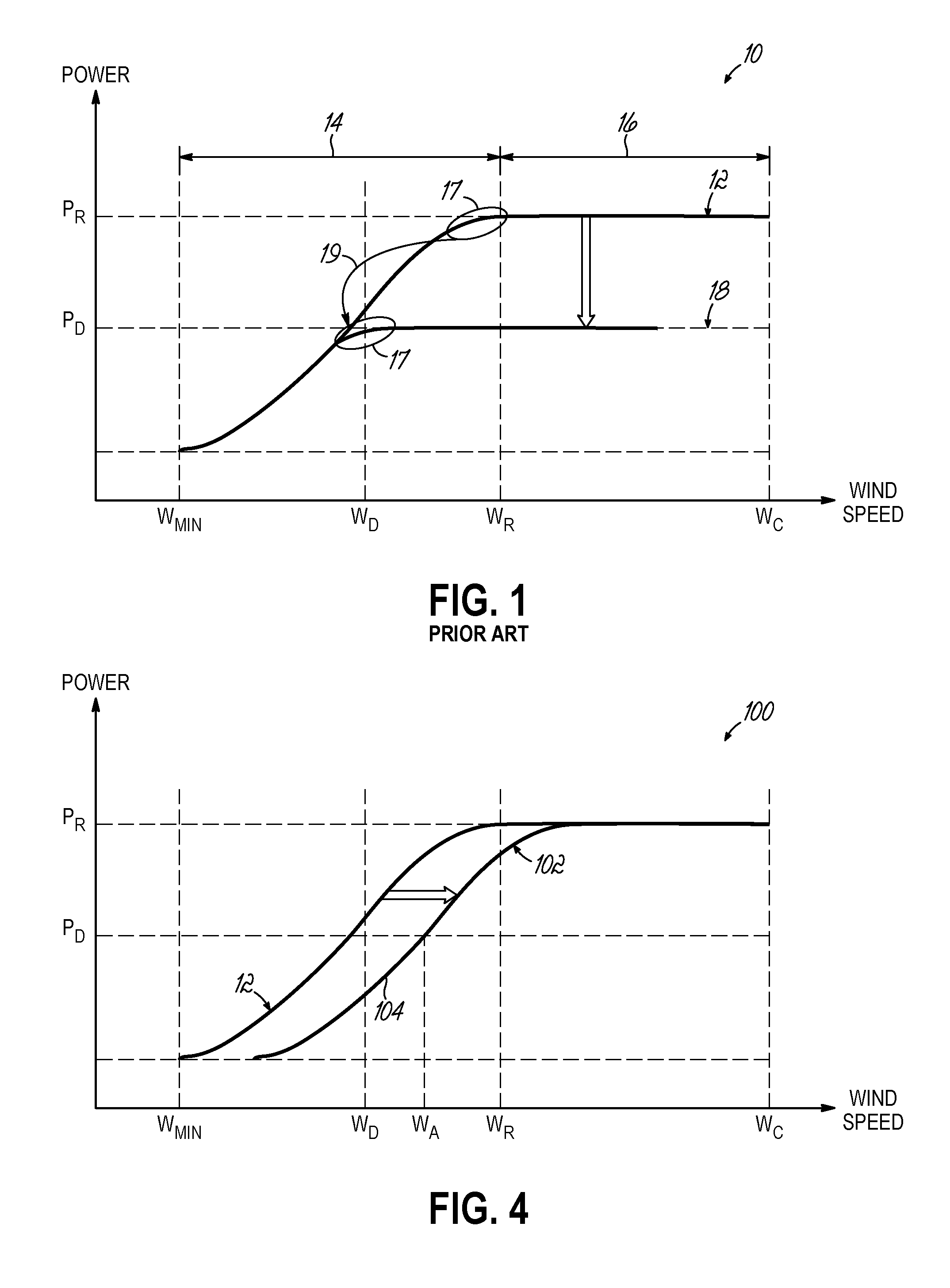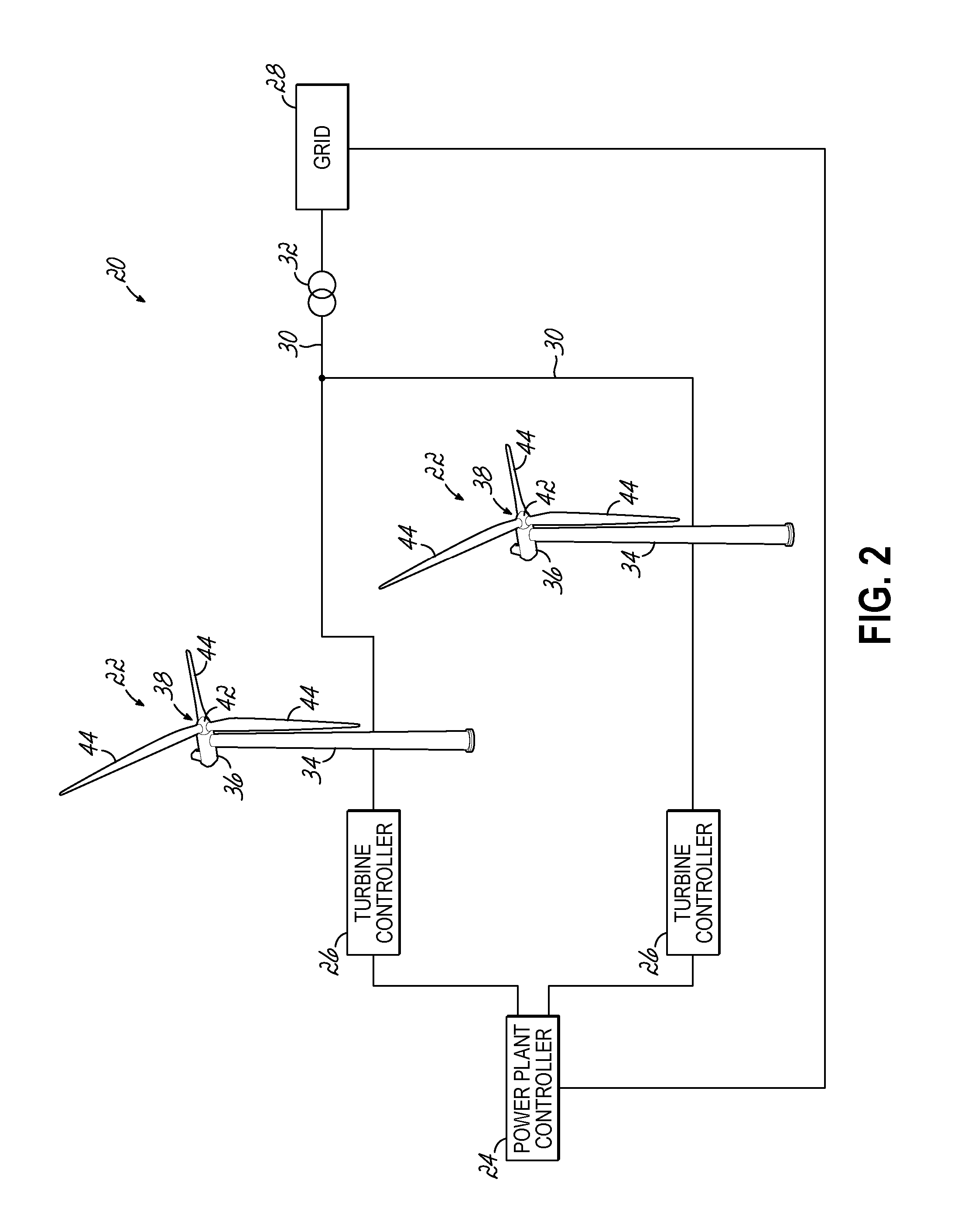Partial-load de-rating for wind turbine control
a wind turbine and partial load technology, applied in the direction of wind turbines, engine control, motors, etc., can solve the problems of limited aerodynamic power, upper limit of how much power the turbine can generate at that wind speed, and limited power b>12/b> in the low wind region,
- Summary
- Abstract
- Description
- Claims
- Application Information
AI Technical Summary
Benefits of technology
Problems solved by technology
Method used
Image
Examples
Embodiment Construction
[0025]Generally, the embodiments of the invention are directed to control methods and systems for wind energy applications that reduce the amount of pitching required to maintain desired power output levels.
[0026]Referring now to FIG. 2, an exemplary wind farm 20 includes a plurality of wind turbines 22 and a power plant controller 24 in communication with a plurality of wind turbine controllers 26. The wind turbines 22 may be electrically coupled to the electrical grid 28 via an internal wind farm grid 30 that is electrically coupled to the electrical grid 28 at a common point of connection 32. Each wind turbine 22 may include a tower 34, a nacelle 36 disposed at the apex of the tower 34, and a rotor 38 operatively coupled to a generator 40 (FIG. 3) housed inside the nacelle 36. In addition to the generator 40, the nacelle 36 may house various components needed to convert wind energy into electrical energy and also various components needed to operate and optimize the performance o...
PUM
 Login to View More
Login to View More Abstract
Description
Claims
Application Information
 Login to View More
Login to View More - R&D
- Intellectual Property
- Life Sciences
- Materials
- Tech Scout
- Unparalleled Data Quality
- Higher Quality Content
- 60% Fewer Hallucinations
Browse by: Latest US Patents, China's latest patents, Technical Efficacy Thesaurus, Application Domain, Technology Topic, Popular Technical Reports.
© 2025 PatSnap. All rights reserved.Legal|Privacy policy|Modern Slavery Act Transparency Statement|Sitemap|About US| Contact US: help@patsnap.com



